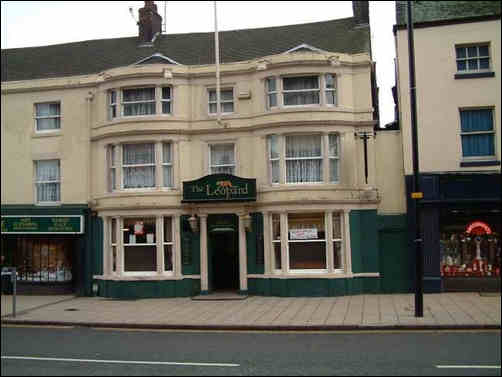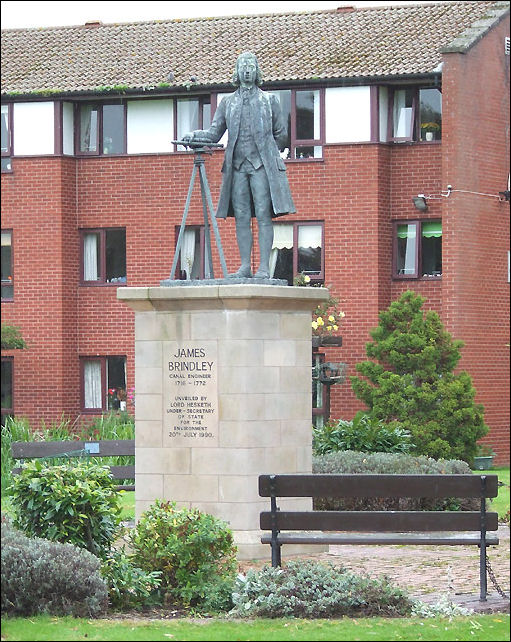|
"Let
us now praise famous men..."
Ecclesiasticus
44:1-15
James Brindley (1716-1772)
Brindley built the canal which
made the Etruria Pottery works a major business success, the Etruria
works made the village of Etruria a thriving community.
Wedgwood was an astute
businessman, he wanted to develop his pottery business (which at
that time was at the Brick House Works, Burslem) and he wanted
better access to Liverpool and Hull for the export of his ware.
So in 1765 he
discussed with Brindley the subject of a canal system running
through the Potteries district, in 1767 he purchased the Ridgehouse
House Estate because he knew this was where the canal was planned to
run through.
His Etruria factory was opened in 1769 and the canal was built later
and opened in 1777.
Burslem's Leopard Hotel
held in 1765
the first meeting between Josiah Wedgwood and Thomas Bentley,
Erasmus Darwin and the engineer James Brindley
which
culminated in the cutting of the Trent and
Mersey Canal.
"On Friday last I
dined with Mr. Brindley, the Duke of Bridgewater's engineer, after
which we had a meeting at the Leopard on the subject of a
Navigation from Hull.... to Burslem"
– Josiah
Wedgwood,11th March 1765.

In the centre of
Burslem the Leopard Inn, south of the Old Town Hall, with two
three-storeyed bows, the three parts of each bow separated by
columns.

Since the potteries around
Stoke-on-Trent were in desperate need of something better than
the pack-horse to carry their fragile wares, they wholeheartedly
supported the connection of Staffordshire to the Trent and to the
Mersey.
The first sod was cut near
Brownhills by Josiah Wedgwood in 1766 and Brindley carried it away
in a barrow.
From Runcorn, the canal would climb
by a series of thirty-five locks to
Harecastle (near Tunstall), pass through a three thousand yard
long tunnel, then descend by a further forty locks to join the Trent
at Wilden Ferry, near
Shardlow. There was mounting ridicule about his scheme and,
although the canal opened from Shardlow to near Stafford in 1770, it
took eleven years to drive the tunnel.
Although Brindley and his
assistants surveyed the whole potential system, for, from the start,
he had asserted his view of the Trent and Mersey as the "Grand Trunk
Canal" – the Grand Cross of waterways across the country – he would
not live to see it completed. The Harecastle Tunnel finally opened
in 1777 - 5 years after his death.

Statue of James
Brindley - canal engineer
- photo: Roger Kidd Oct 2007 -
In Etruria, on the Caldon
Canal, near the junction with the Trent & Mersey Canal stands this statue of James Brindley - produced
in 1990 by by the sculptor Colin Melbourne.
JAMES
BRINDLEY
CANAL ENGINEER
1716-1792
unveiled by
Lord Hesketh
Under-secretary of Sate
for the Environment
20th July 1990
 |
![]()
![]()
![]()